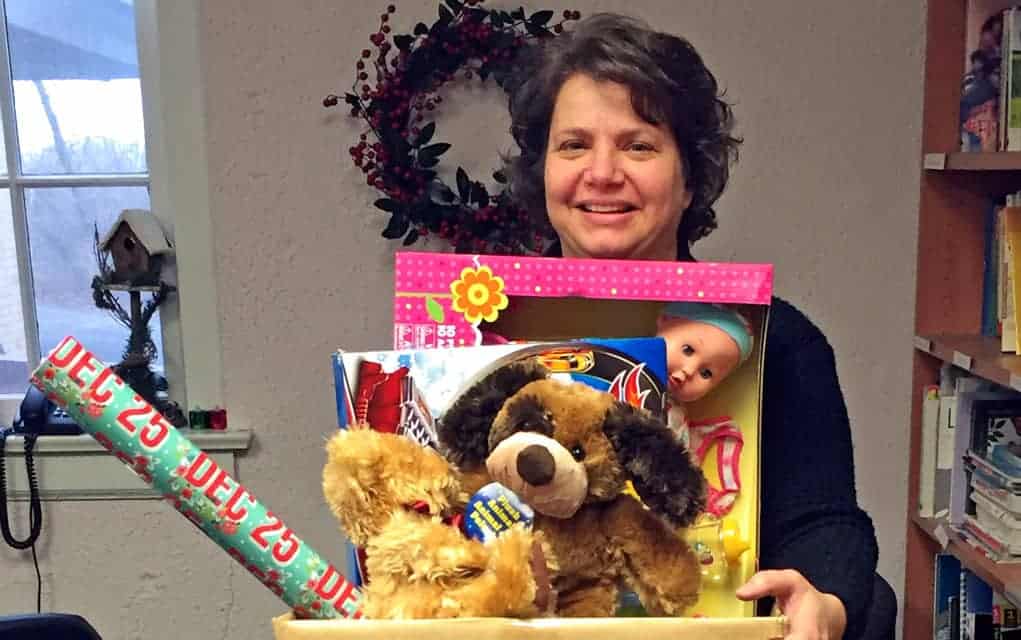In the season of giving, can it be true that Canadians are becoming less generous? The Fraser Institute says yes, while others would beg to differ.
A new report from the right-leaning think tank, titled Generosity in Canada and the United States: The 2015 Generosity Index, suggests fewer of us are donating to registered charities, and that the amounts given are smaller.
In Ontario, the report states that 22.9 per cent of tax filers made a charitable donation, with donation amounts averaging at 0.64 per cent of the giver’s income. This is down from the 2003 number published in the study, which show that 25.4 per cent of Ontarians donated 0.85 per cent of their annual incomes.
Justin Smith, an economics professor at Wilfrid Laurier University, has a different take. He says some of the numbers published in the study may be misleading, noting the Fraser Institute uses only one of two sets of available data in reaching its conclusions.
“There are two key sources of information on donations. One, tax record, which reports total tax-receipted donations each year, and two, the Survey on Giving, Volunteering and Participating, which is more infrequent, but measures all giving,” he said. “The Fraser Institute uses number one. Depending on which data sets you use, you will get a very different number on the fraction of individuals that donate. For 2013, the tax data says that about 22 per cent of tax filers donate, but the survey says that 82 per cent of people age 15-plus donate.”
Even when just looking at the data published in the 2015 Generosity Index, Smith says he isn’t convinced that Canadians are giving less.
“If you look closer at the same data used by the Fraser Institute, it is not clear that people are actually giving less, in my opinion. The [report shows] giving as a fraction of income to calculate the change over time in giving. If total giving actually rises, but incomes rise faster, the fraction will fall,” he said, adding that when looking deeper into the data used for the report, giving seems to have evened out over the last few years. “My own observations is that giving is roughly unchanged over the past few years, and if anything, those who donate give more. It is worth noting that the average donation per tax filer was $340 in 2011 and $337 in 2013 and the average donation per donor was $1,482 in 2011, but $1,543 in 2013. This is drawn from the same data as the Fraser Institute report.”
On a local scale, donations are more than meeting the community’s needs. Kelly Christie at Woolwich Community Services says donators in the area have not left any gaps in services for the programs run by the agency.
“Not to discourage people from giving to us, but yes, charitable giving to our agency is on target. This is just an amazing community and they always step up to the plate,” she said, adding that WCS was able to fulfill their Christmas commitments, and still have a bit left over for other programs. “We did the Christmas Goodwill program, and we were able to provide 165 families with gifts, their turkeys and grocery gift cards so they can have a full fledged Christmas. From that, we do the birthday present cupboard all year round and this year, we implemented our Grandparents Day. Grandparents can come in and get a gift for their grandchildren.”
Christie also has a message for those that donate to WCS and similar programs around the region.
“A great big huge thank you. Our agency does so many different programs and supports so many different people and in a variety of ways, whether it is family violence prevention or our community garden,” she said. “We just couldn’t be doing it without the community and please, keep up the good work. Just know that we are truly paying it forward and that people are truly grateful. The recipients are very grateful.”
With donations on par in Elmira, and questionably, across the province, there does seem to be more of a push to make donations during the holiday season. Smith says that is caused by a few different factors.
“I can see three reasons why this happens. First, knowing that it’s the giving season, charities probably ramp up fundraising efforts to attract more donations. Second, economists think that individuals donate for two key reasons: because they are altruistic, and because they derive satisfaction from their own donations – sometimes called the ‘warm glow,’” he said. “With an increase in the giving spirit this time of year, people might experience more of a warm glow effect, which leads them to give more. Finally, the holidays coincide with the end of the tax year, and people may now be in a better position to know how much they are able to donate.”









